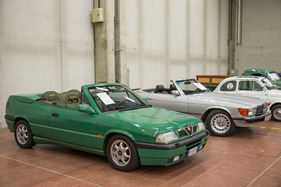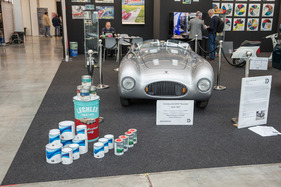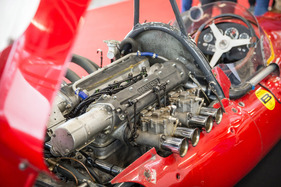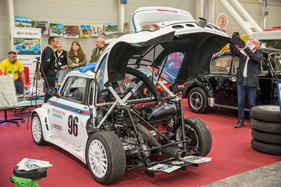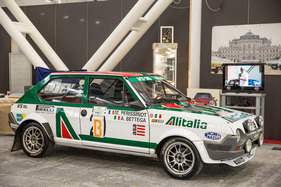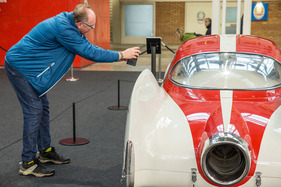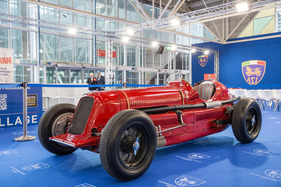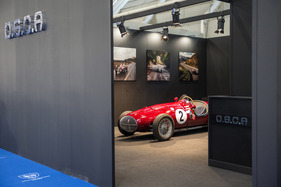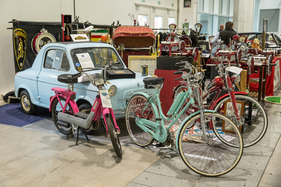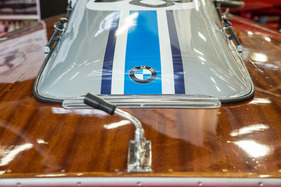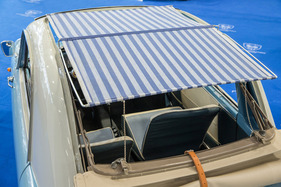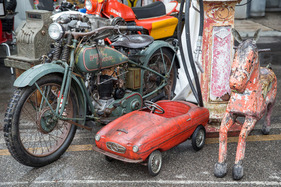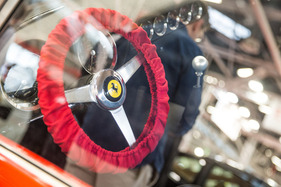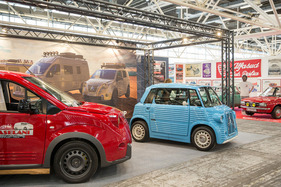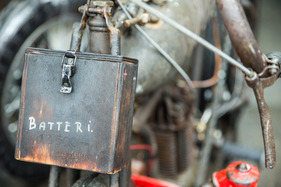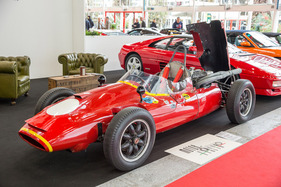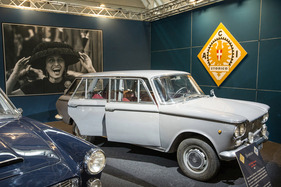After many years in Padua, Auto e Moto d'Epoca took place for the second time at the Fiera in Bologna. The fair opened its doors just a few days after another devastating flood in Emilia Romagna, which also affected the city itself, and thus under difficult conditions. And according to the rumors circulating, the fair will be moving to Modena next year. However, nobody wanted to confirm this yet.

The exhibition halls in Bologna are as confusing as the pasta on a plate of well-mixed spaghetti bolognese. It was not easy to find your way through the maze of stands and exhibitions. At the end of the day, the pedometer on my cell phone counted no less than 16,616 steps.
Few pre-war cars and some gaps
Italian models naturally dominated the show, but the Germans followed close behind, especially from Porsche and Mercedes-Benz. An increasing bad habit at classic car shows is to also exhibit newer vehicles, including current sports cars, especially Ferrari and Lamborghini. This is probably a question of money. The range of pre-war cars was also small this year, but the presence of some Bugatti Type 35 replicas was strikingly large? The gaps in vehicles from the fifties were also astonishing. The exception was the Alfa Romeo Giulietta and its derivatives.
Carlo Abarth's creations were also well represented in Bologna, both in restored and unrestored condition. However, the conversion of a green Alfa Romeo Alfa 33 into a convertible attracted far less attention, which may have been due to the asking price of 100,000 euros. The "Trentatre" stood there quite abandoned, but appeared to have been skillfully realized and could have had potential with buyers (if priced more reasonably).
The Cooper-Maserati T51 from the former Scuderia Centro Sud was an exciting discovery. The English car with an Italian engine competed in Formula 1 with Frenchman Maurice Trintignant in 1960. In 1959, Jack Brabham won the Formula 1 World Championship for the first time with a mid-engined car in a Cooper T51, albeit powered by a 2.5-liter Coventry-Climax engine.
Big announcement, small exhibition
It had been announced in a big way, but unfortunately the special exhibition on Fiat in the main hall seemed rather puny. Only six vehicles were on display in the huge space, although these included some of the most remarkable cars from the brand's 125-year history.
Nevertheless, the Turin-based company also exhibited - in addition to its first ever car - the Turbina, the concept of a sports car with a gas turbine from 1954, which was the second attempt by a car manufacturer with this drive concept after Rover in 1949. Development had already begun at Fiat in 1948, more or less in ignorance on the part of the Fiat board of directors. But it was not until April 14, 1954 that the Fiat Turbina made its first laps on the famous test track on the roof of the Fiat factory in Lingotto. The engine is said to have produced around 300 hp and accelerated the car to around 250 km/h without a clutch or gearbox.
The Japanese manufacturers didn't let themselves get carried away in Bologna this year either and came to Italy with a historic Toyota Corolla and an old Subaru Impreza. Overall, however, the factories continued to hide behind their electric cars, demonstrating that there is currently no place in their marketing concepts for combustion engines and the history associated with them.
Clubs far from the beaten track
At the stand of the Italian automobile club ACI, they presented various Maserati from the '50s and '60s. Interspersed with these were lesser-known cars such as the Spampinato, a small Barchetta with Fiat-Abarth 750 technology from 1957. Milan-based collector and architect Corrado Lopresto was also present with his Collezione Lopresto, which was founded in 1979, and displayed several vehicles from his extensive collection of Italian prototypes, one-offs and firsts. His star this time was a Fiat 1500 Familiare from 1963.
The hall of clubs, where the Automotoclub Storico Italiano ASI, the Registro Alfa Romeo RIAR, the Zagato Club and many others were also present, was far away from the action. You almost had to "get lost" here to find them at all. This was all the more regrettable as there were some real gems on display, including some Bertone prototypes that the world has not seen for a long time.
The classic cars from Fiat and Alfa Romeo showed the variety of models in the '50s, '60s and '70s under Fiat designer Dante Giacosa or the creative power of Alfa Romeo's Centro Stile and the Italian design studios that have almost completely disappeared today. These are tempi passati and worse still: whether Fiat and Alfa Romeo will still exist in ten years' time under Stellantis' care is more questionable than ever. Whether and which models from the current era will one day be exhibited remains to be seen.
The future for the past
Whether in Bologna or, as suspected, in Modena from next year, one thing is certain: Italy and therefore Auto e Moto d'Epoca will not be running out of classic cars in the foreseeable future: The Fiat Panda, now 34 years old, is clearly a classic. This also applies to the VW Golf GTI, which will soon have half a century under its belt.

Conclusion: Prices in Bologna were in the upper segment for both spare parts and complete cars. In the case of the vehicles, many of which were offered in "Ottima Condizione", but whose condition on closer inspection was at best only average, the wish was probably father to the thought when it came to asking prices.















































